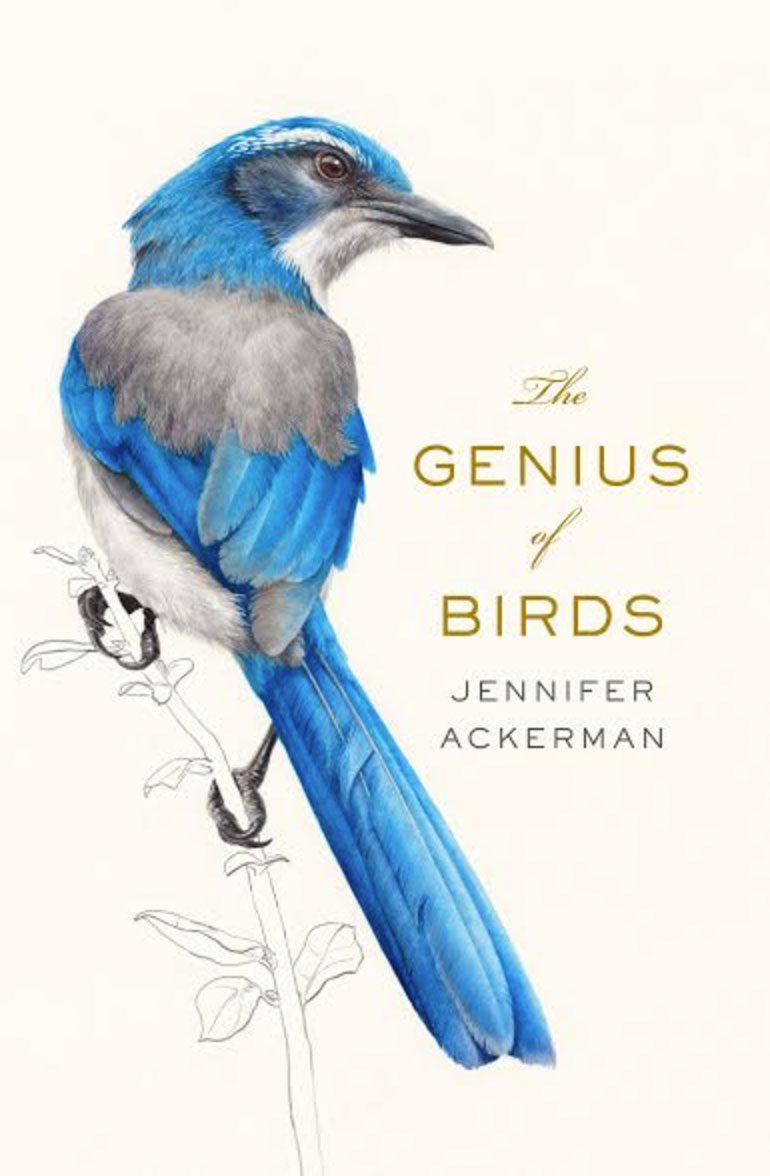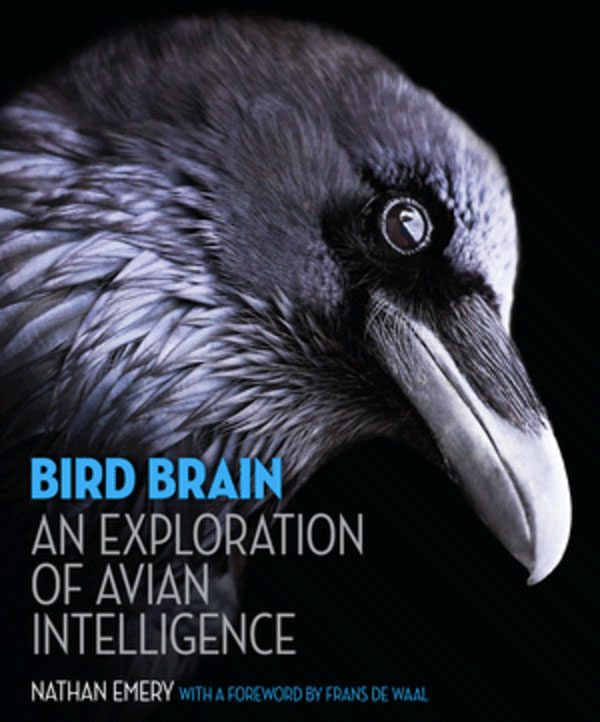How Intelligent Are Birds? Two Books Tackle the Subject
Book review by Stephen J. Bodio
December 21, 2016
Often two books on the same subject come out at once. At first this seems to be the case with Jennifer Ackerman’s Genius of Birds and Mason Emery’s Bird Brain—both books explore the fascinating subject of birds, their famously tiny brains, and the intellectual heights they’ve nevertheless proven able to reach. But despite the superficial similarity, the two books’ approaches are so different that they’ll appeal to entirely different audiences. While the bird-obsessed may end up reading both, others should take a careful look at the books to see which one suits their preference.
The writers and formats of the books are as different as they could be. Ackerman is a science writer, a stylist and traveler. Her Genius of Birds wanders to New Caledonia and California before reaching its conclusion. Emery is a lecturer in cognitive science at Queen Mary University in London who works with local corvids (crows, jays, and magpies). To my mind, his book’s structure is more confusing, although also intriguing. Bird Brain consists of pages and entire spreads replete with charts and diagrams and visual displays. At the risk of sounding like a curmudgeon, they remind me of the modern natural history museum with all its interactive displays, which this old-style science fan finds jarring.
An example: Ackerman, in Genius, dispenses with the avian cortex by page three: “The avian brain had no cortex like ours, where all the ‘smart’ stuff happens. Birds had minimal noggins for good reason, we thought: to allow for airborne ways….” She seems to feel that the fact is established, so does not revisit the idea. Whereas Bird Brain comes back to the cortex a half-dozen times or more, giving new and interesting information every time in an utterly nonlinear manner. The book is not a narrative.
Another difference emerges when the books take up the topic of sentience: Ackerman refers to two camps of cognitive researchers. “…the self-described killjoys, who deny that nonhuman species have anything remotely resembling this kind of advanced cognition; and second, those who echo Darwin’s claim that humans differ mentally from other species only in degree but not in kind.” Emery seems to see no dichotomy, but accepts the first view. He says, “by focusing on whether animals are like us, we do them a disservice in treating them as we would expect to be treated rather than tailoring our attention to the individual needs and motivations that make them unique.” A fair statement; still, his unwillingness to call birds conscious bothers me.

Ackerman is for people who like a good story. In Genius you’ll visit tool-making New Caledonian crows and empathetic California jays, and their researchers. While she covers other bird families, for example parrots, I would say that it is more about several well-studied corvid species, ranging from Japan to California, than anything else.
You could say that Bird Brains is more for cyber kiddies and hypertext fans, but there is a lot more to it than flash: images and diagrams on every page; facts and statistics, some startling and vivid, pop out everywhere. The writing is picturesque, too, as when Emery describes a key difference in bird and mammal brains. “Imagine trying to fit a sheet of paper into a Ping-Pong ball. The best method is to crumple the paper into a ball and squeeze it inside. Something similar occurs with the mammalian brain where the cortex is crumpled up to fit inside the skull. The avian brain is more like the same sheet of paper being soaked in water and then rolled into a ball….”
Emery also goes beyond the corvids, that best-known family of avian brainiacs, to cover the majority of bird families, as well as much physiology and questions about bird senses. He suggests that three groups other than the familiar parrots and crows may join the “clever club”: falcons, woodpeckers, and hornbills. Falcons are a natural, considering their newly confirmed relationship to parrots. Hornbills and woodpeckers, which are related, are a little more surprising.
I said at the outset that the books’ different approaches suit them to different audiences. But after spending a few weeks with them I have to say: get them both. Ackerman’s almost novelistic narrative skill brought her protagonists, both avian and mammal, to life, but I learned more from Emery. And if you have a smart science kid in the house, he or she will definitely get more from Emery.

All About Birds
is a free resource
Available for everyone,
funded by donors like you
American Kestrel by Blair Dudeck / Macaulay Library
